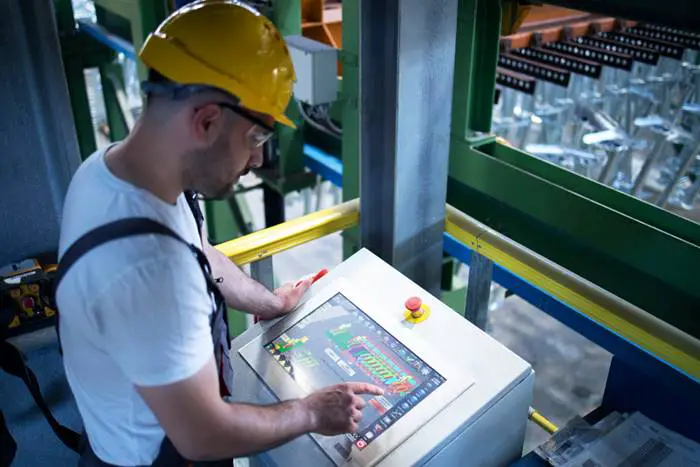Computers have become an indispensable part of our daily lives, revolutionizing the way we work, communicate, and access information. While they offer numerous advantages, it is essential to understand the potential drawbacks as well. In this article, we will delve into the 10 key advantages and 10 disadvantages of using computers, providing examples and detailed explanations for each.

Advantages of Computers:
1. Increased Efficiency
Computers have dramatically enhanced productivity by automating tasks and performing complex calculations in a fraction of the time it would take humans.
Example: In business, accounting software expedites financial calculations, reducing manual errors and saving valuable time.
2. Access to Information
With computers and the internet, vast amounts of information are available at our fingertips. We can effortlessly research any topic, access online libraries, and stay updated with current events.
Example: With the internet, students can access educational resources from around the world, expanding their knowledge beyond what traditional textbooks offer.
3. Communication and Connectivity
Computers facilitate seamless communication through emails, video conferences, and social media platforms, connecting people globally in real-time.
Example: Remote workers can collaborate effectively, eliminating geographical barriers and improving efficiency.
4. Improved Creativity
Computers provide powerful tools for creative expression, such as graphic design software, video editing applications, and music production software.
Example: Artists and designers can bring their ideas to life, experimenting with various digital techniques and enhancing their artistic endeavors.
5. Enhanced Learning Opportunities
Educational software, e-learning platforms, and interactive multimedia programs offer engaging and personalized learning experiences.
Example: Virtual reality simulations allow medical students to practice surgical procedures in a safe environment, accelerating their learning curve.
6. Automation and Robotics

Using computers for this purpose has its advantages and disadvantages. Computers play a crucial role in automation and robotics, revolutionizing industries and increasing precision and efficiency in manufacturing processes.
Example: Robotic assembly lines in car manufacturing reduce errors and increase production speed, resulting in cost savings and improved quality.
7. Storage and Organization
Computers enable us to store vast amounts of data in small physical spaces, eliminating the need for bulky file cabinets and enhancing data accessibility.
Example: Cloud storage services ensure data backup and synchronization across multiple devices, providing convenient access to files from anywhere.
8. Financial Management
Personal finance software and online banking tools simplify budgeting, expense tracking, and investment management.
Example: Financial planners use specialized software to create comprehensive financial plans for their clients, optimizing investment strategies and achieving financial goals.
9. Entertainment and Recreation
Computers offer a wide range of entertainment options, including gaming, streaming movies and TV shows, and accessing virtual reality experiences.
Example: Gaming enthusiasts can immerse themselves in realistic virtual worlds, challenging their skills and connecting with other players globally.
10. Globalization and E-commerce
Computers have fueled the growth of e-commerce, enabling businesses to reach customers worldwide, expanding market opportunities and consumer choices.
Example: Online retail platforms connect buyers and sellers worldwide, fostering a global marketplace and transforming the way we shop.
Disadvantages of Computers:
1. Health Risks
Prolonged computer use can lead to various health issues such as eye strain, musculoskeletal disorders, and sedentary lifestyle-related problems. Therefore, proper healthy computing habits must be practiced whenever working with computers.
Example: Spending excessive time in front of a computer screen without breaks can cause computer vision syndrome and contribute to back and neck pain. (Pro tip: Adjust your screen settings to a level that’s comfy to your eyes)
2. Cybersecurity Threats
Computers are vulnerable to malware, viruses, and cyber-attacks, putting personal information and sensitive data at risk.
Example: Ransomware attacks can encrypt valuable data, demanding payment for its release, causing significant financial and reputational damage.
3. Dependency and Addiction
Excessive reliance on computers can lead to dependency and addiction, affecting social interactions and overall well-being.
Example: Internet addiction can cause individuals to neglect relationships, work, and personal responsibilities, leading to adverse consequences.
4. Privacy Concerns
Computers store vast amounts of personal data, raising concerns about privacy breaches and unauthorized access to sensitive information. Do take serious precautions to prevent identity theft.
Example: Data breaches in which personal information is stolen from online databases can lead to identity theft and financial loss.
5. Technological Obsolescence
Computers and software quickly become outdated, requiring frequent upgrades and replacements, leading to additional expenses.
Example: Older computers may not support the latest operating systems or software, limiting functionality and compatibility.
6. Social Isolation

Excessive computer use can lead to social isolation, as individuals spend more time interacting with screens than with real people.
Example: Spending hours on social media platforms can create a false sense of connection while reducing face-to-face interactions.
7. Environmental Impact
The production and disposal of computers contribute to electronic waste and environmental pollution.
Example: Improper disposal of electronic devices can result in hazardous chemicals leaching into soil and water, posing risks to ecosystems and human health.
Read also: Proper Ways to Dispose of An Old Computer
8. Distraction and Procrastination
Computers offer numerous distractions, such as social media, online games, and streaming services, which can hinder productivity and focus.
Example: Students may struggle to concentrate on their studies when tempted by online entertainment options.
9. Job Displacement
Automation driven by computers can lead to job losses in certain industries, as machines replace human workers.
Example: Manufacturing plants may reduce their workforce when implementing automated production lines, causing unemployment in the affected sectors.
10. Lack of Human Interaction
Over-reliance on computers for communication can lead to a decline in face-to-face interactions and interpersonal skills.
Example: Virtual meetings and online interactions may lack the nuances of nonverbal communication and human connection.
Conclusion
Computers offer numerous advantages, enhancing productivity, connectivity, and creativity. However, they also come with potential disadvantages, including health risks, privacy concerns, and social drawbacks. Understanding both the advantages and disadvantages of computers helps us harness their potential while mitigating the associated challenges, ensuring a balanced and responsible use of this transformative technology.
